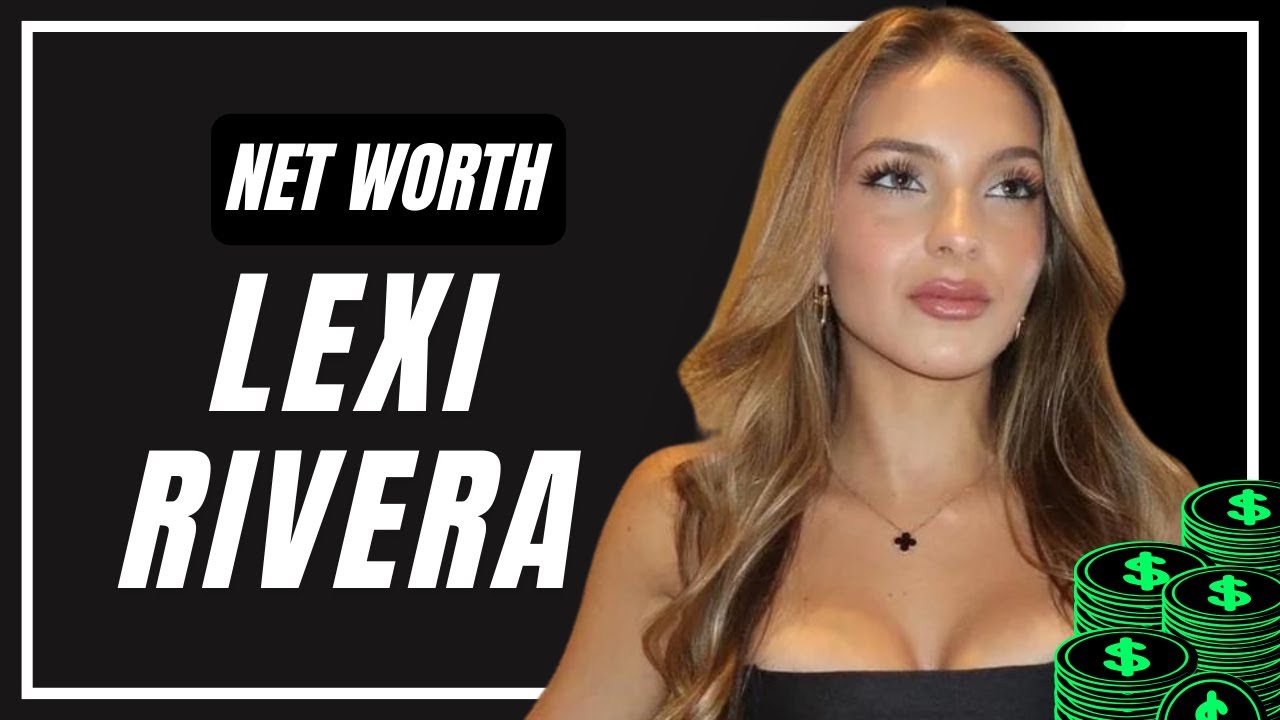Introduction: Lexi Rivera as an Economic Actor
In the contemporary attention economy, personalities on social platforms have transitioned from cultural phenomena into financially fungible assets. Among them, Lexi Rivera has emerged as a prototypical example of how digital fame is converted into portfolio value. This article examines Lexi Rivera: The Rise of a Key Asset in the Influencer Economy from an economic and strategic perspective, mapping revenue streams, valuation approaches, market context, and risk factors.
The Macro Picture: Market Size and Growth Dynamics
The broader influencer marketing ecosystem has expanded rapidly, attracting corporate marketing budgets, venture capital, and diversified monetization frameworks. Key economic data points:
- Global influencer marketing spend: estimated in the tens of billions of dollars annually (several industry reports place it within a broad multi-billion range in the early 2020s).
- Growth rates: annual growth rates (CAGR) for segments like creator-led commerce, sponsorships, and platform ad revenue vary by region but commonly range from 8% to 20%+ depending on measurement and timeframe.
- Unit economics: headline advertising metrics such as CPM/CPA and effective commission rates drive influencer pricing and margins.
| Metric | Representative Range / Value | Notes |
|---|---|---|
| Market Spend on Influencer Marketing (annual) | $10bn – $25bn | Varies by report; includes sponsorships, content production, and creator commerce |
| Platform CPM (native video) | $5 – $30 per 1,000 views | Depends on platform, audience geography, and campaign targeting |
| Typical talent fee (macro-influencer) | $5,000 – $100,000 per sponsored post | Wide range based on reach, engagement, and exclusivity |
| Creator commerce gross margin | 20% – 60% | Depends on fulfillment, product category, and scale |
What Makes an Influencer an Economic Asset?
Converting influence into an asset requires several attributes beyond follower counts. These attributes are what give a creator like Lexi Rivera enduring economic value:
- Audience quality: engagement, demographics, and purchasing propensity.
- Brand alignments: fit with consumer brands and ability to capture advertising budgets.
- Content IP: reusable creative formats, owned products, and licensing potential.
- Distribution options: cross-platform presence and audience portability.
- Scalability: ability to extend monetization from one-off deals to recurring channels (merch, subscriptions, content IP).
Lexi Rivera: The Rise of a Key Asset in the Influencer Economy
When assessing Lexi Rivera as an asset, analysts look at a matrix of these attributes. Her trajectory demonstrates how a public persona can be structured into an investable economic entity: diversified revenue streams, platform resilience, and branded derivatives (merch, appearances, licensing).
Brand Partnerships and Sponsored Content
A primary channel of monetization is sponsored content. Brands pay for access to an influencer’s attention and trust. For creators at Lexi Rivera’s scale, engagements can range from single sponsored posts to long-term ambassador contracts. The price depends on audience relevancy, engagement rate, and campaign KPIs.
Content Diversification and Owned IP
Beyond transactional sponsorships, creators increase asset value through owned IP: branded product lines, licensed content, and original programming. This increases predictability of cash flow and reduces dependence on platform algorithms.
Platform Distribution and Audience Portability
Multi-platform presence — for example, pairing short-form video with longer-form content, podcasts, and e-commerce storefronts — enhances resilience. Audience portability (moving fans from one platform to another) is a critical determinant of long-term earnings potential.
Revenue Streams: Breakdown and Benchmarks
The economic profile of an influencer asset like Lexi Rivera typically includes a mix of the following revenue streams:
- Sponsorships and endorsements
- Platform ad revenue and creator funds
- Affiliate marketing
- Direct-to-consumer commerce (merch, product lines)
- Appearances and paid events
- Licensing and IP deals
| Revenue Type | Typical Contribution to Total | Notes |
|---|---|---|
| Sponsorships | 30% – 60% | Often the largest single source for mid-to-large creators |
| Creator ad revenue | 10% – 25% | Depends on platform monetization strength |
| Merch & DTC | 5% – 30% | Scaled by product-market fit and fulfillment efficiency |
| Affiliate/Commerce | 5% – 20% | Variable dependent on conversion rates and audience buying behavior |
| Appearances & Licensing | 0% – 15% | Irregular but high-margin when executed |
Valuation Models for a Creator Asset
Treating an influencer as a monetizable asset requires choosing valuation methodologies. Common approaches include:
- Revenue multiple: applying an industry multiple to trailing or forward revenue.
- Discounted cash flow (DCF): projecting cash flows and discounting to present value.
- Option-pricing: valuing potential upside from future IP deals or business extensions.
| Scenario | Assumptions | Indicative Value |
|---|---|---|
| Conservative (Revenue Multiple) | $1.2M annual revenue × 2.0x | $2.4M |
| Growth (DCF) | 5-year CF growth 15% → terminal growth 3% with 10% discount | $3M – $5M |
| Strategic Premium | Includes IP, merch potential and exclusivity, +25% premium | $4M – $6.25M |
These figures are illustrative — actual valuations require granular data on contractual obligations, platform exposure, legal encumbrances, and historical financials. For public-facing creators, many of these data points are private; thus valuations often rely on proxies and industry benchmarks.
Risk Factors and Negative Externalities
Even successful influencer assets carry systematic and idiosyncratic risks:
- Platform risk: algorithm changes or policy shifts can materially reduce reach and monetization.
- Reputational risk: public controversies can cause sponsors to withdraw and reduce valuation.
- Concentration risk: over-reliance on a small number of sponsors or a single platform.
- Regulatory risk: evolving disclosure rules and consumer protection regulations affect sponsor deals.
- Market saturation: increased competition can compress rates and engagement.
Strategic Responses: How Asset Managers and Creators Adapt
Investors, managers, and creators pursue several strategies to reduce volatility and increase the enterprise value of a creative asset like Lexi Rivera:
Diversification of Income Streams
Moving beyond sponsorships into commerce, licensing, and recurring revenue models (subscriptions, memberships) stabilizes cash flows and increases predictability.
Legal and Contractual Structuring
Structuring contracts with clear deliverables, exclusivity limitations, and IP ownership provisions transforms ephemeral attention into enforceable economic rights.
Data-Driven Audience Monetization
Advanced use of first-party data and analytics improves targeting, allowing creators to command higher CPMs or conversion fees. This also enables more efficient affiliate partnerships.
Comparative Case Studies: Similar Influencer Assets
Comparing Lexi Rivera with other creator assets helps isolate what drives higher valuations:
- Creator A: strong commerce focus, moderate engagement — higher gross margins from DTC but greater operational complexity.
- Creator B: heavy platform ad revenue dependence — high volatility correlated with platform monetization policy.
- Creator C: diversified IP and licensing deals — lower short-term sponsorship income but higher long-term residuals.
Macro Policy and Market Implications
As influencers become formalized as assets, broader market and regulatory questions arise:
- Taxation: how revenue streams are classified (earned income vs capital gains) affects investor returns.
- Securities considerations: when does selling a share of future creator income become a security offering requiring disclosure?
- Consumer protection: standardized disclosure can reduce asymmetric information between creators, brands, and consumers.
Measuring Performance: KPIs for Influencer Asset Management
Asset managers use a combination of engagement metrics and financial KPIs:
- Engagement rate (likes + comments + shares divided by followers)
- Conversion rate for affiliate links and commerce
- Average sponsorship fee and booking frequency
- Recurring revenue share (subscriptions, memberships)
- Customer acquisition cost (CAC) for DTC product lines
| KPI | Target / Benchmark | Significance |
|---|---|---|
| Engagement Rate | 2% – 6% | Higher rates support premium sponsorships |
| Affiliate Conversion | 1% – 5% | Depends on product price and call-to-action |
| Recurring Revenue Ratio | 20%+ | Elevates valuation multiples |
Practical Implications for Stakeholders
For brands, investors, and intermediaries, the rise of creators like Lexi Rivera changes how partnerships are underwritten and measured:
- Brands seek consistent ROI and may prefer creators with diversified monetization and clear audience data.
- Investors evaluate creator assets using familiar financial tools adapted to the creator ecosystem (revenue multiples, DCF), but must account for non-financial asset features such as reputation and cultural relevance.
- Managers and agents increasingly act like small agencies or C-suite teams, optimizing for long-term enterprise value rather than one-off fees.
Lexi Rivera — From Influencer to Institutional Asset
The phrase Lexi Rivera: The Rise of a Key Asset in the Influencer Economy captures a structural shift: creators are no longer merely content producers but nodes in commercial networks with monetizable rights. By strategically diversifying revenue, securing contractual protections, and building durable audience relationships, creators can transform ephemeral attention into predictable



